Air plants and succulents are known for easy care which makes them great choices for novice gardeners. However, even seasoned gardeners have confused the two. Knowing the differences between an air plant vs. a succulent helps create spaces of exotic beauty. Both plants bring unique textures and colors to any home decor. Some are so exotic they appear to be from another planet. But there are some key differences between them. What is the difference between a succulent and an air plant? Let’s find out!
Comparing Air Plant vs. Succulent
Air plants are unique in that they do not require soil to grow. Instead, they absorb water and minerals through their leaves from the air around them. They are usually found clinging to trees or other surfaces in tropical climates and can survive with very little water.
Succulent plants, on the other hand, need well-draining soil for survival and thrive in arid environments such as deserts or rock formations. They store moisture within their thick stems and fleshy leaves, which allows them to go without water for extended periods of time.
Air plants typically require bright light but no direct sun, whereas succulents prefer ample sunlight exposure throughout the day. Lastly, air plants usually flower once a year, while succulents may bloom multiple times during a growing season, depending on the type of plant.
| Air Plant | Succulent Plant |
|---|---|
| Leaves are usually thin, spikey, or tendrils | Leaves and stems are thick and fleshy |
| Easy to care for, low maintenance | Easy to care for, low maintenance |
| Genera Tillandsia | Includes plants from many genera |
| Epiphyte plant | Terrestrial plant |
| Exposed roots | Underground roots |
| Infrequent but thorough watering | Infrequent but thorough watering |
| Water by submerging plants or misting | Water by soaking roots only |
| Green, red, violet, and burgundy | Green, red, violet, burgundy, blue-green, chartreuse, pink, yellow, purple, and variegated. |
| Display on walls, driftwood, or grow on other plants. | Display in pots, hanging baskets, or grow outside in beds. |
Air Plant vs. Succulent: Leaves
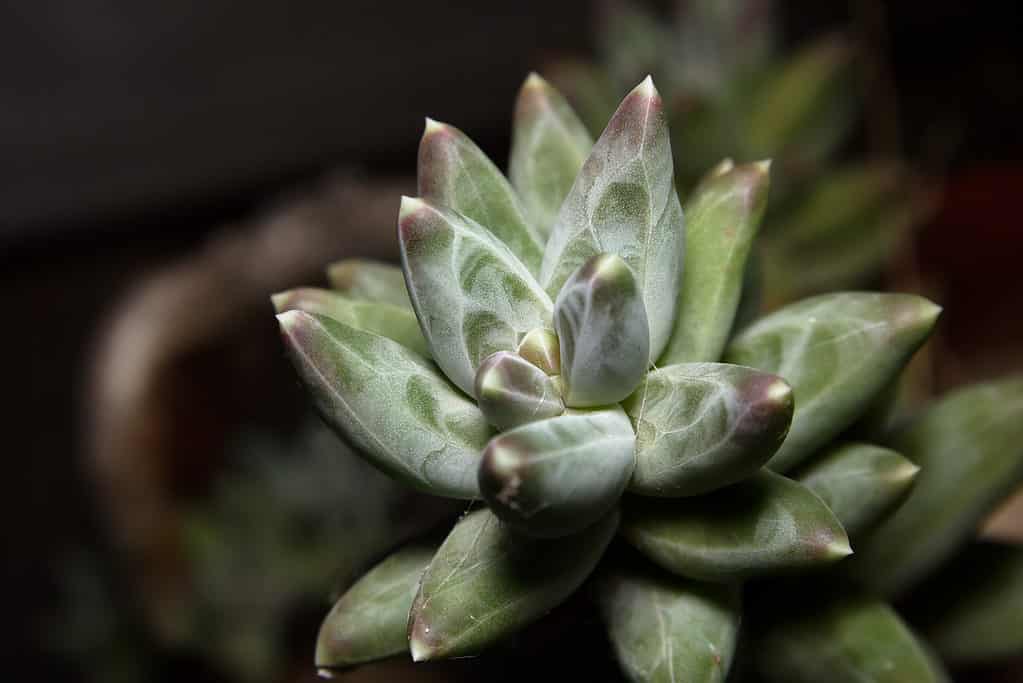
Succulents, as seen here with the little jewel plant, have thick fleshy leaves and stems that store water for long periods of time.
©iStock.com/Andrew Waugh
Air plants are typically characterized by their thin spiky leaves and distinctive appearance. These leaves are often wavy or curly, giving the plant a unique look that distinguishes it from other houseplants.
Succulents, on the other hand, have thick fleshy leaves and stems that store water for long periods of time. Due to this adaptation, succulents are able to survive longer than air plants in dry environments with less frequent watering.
The stark differences between these two types of plants mean they require different care and attention.
Air Plant vs. Succulent: Care
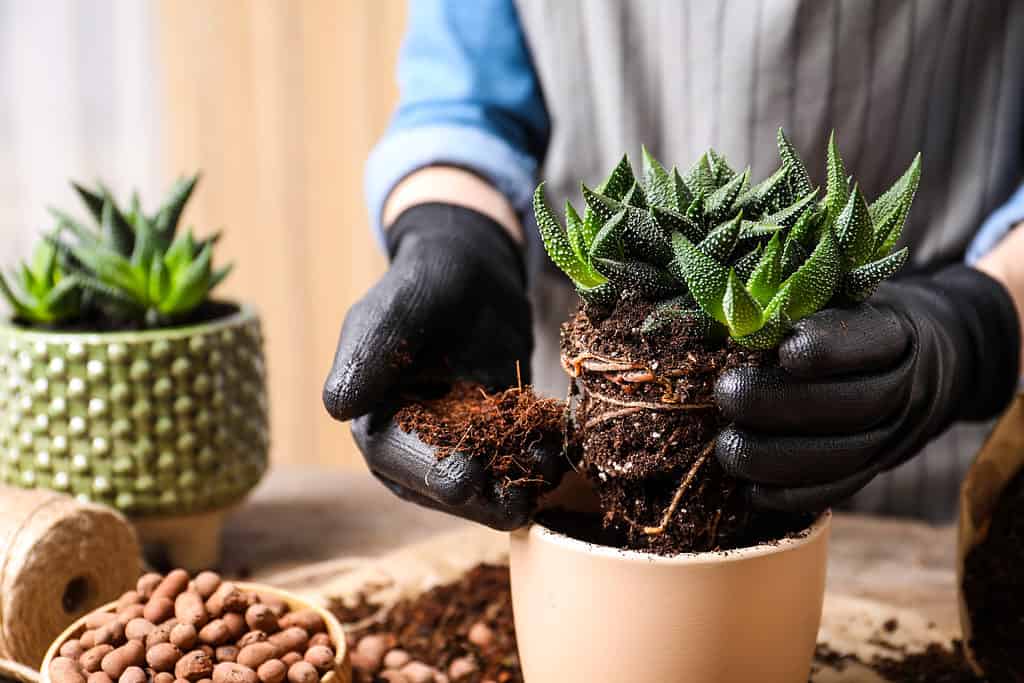
Good soil will provide the right amount of water, air, and nutrients for your succulent to thrive.
©New Africa/Shutterstock.com
When it comes to caring for air plants and succulents, they both require minimal effort. Both types of plants tend to be pest and disease-free, so you won’t have to worry about regular treatments or spraying with harsh chemicals.
This makes them a great choice for beginner gardeners who may not have the knowledge or experience in dealing with temperamental plants. They can also tolerate some neglect if you forget to water them occasionally. Just make sure that when you do remember, give them a good soak! If possible, try moving your air plant or succulent outdoors during the warmer months in order to let it get natural sunlight and fresh air.
Air Plant vs. Succulent: Family
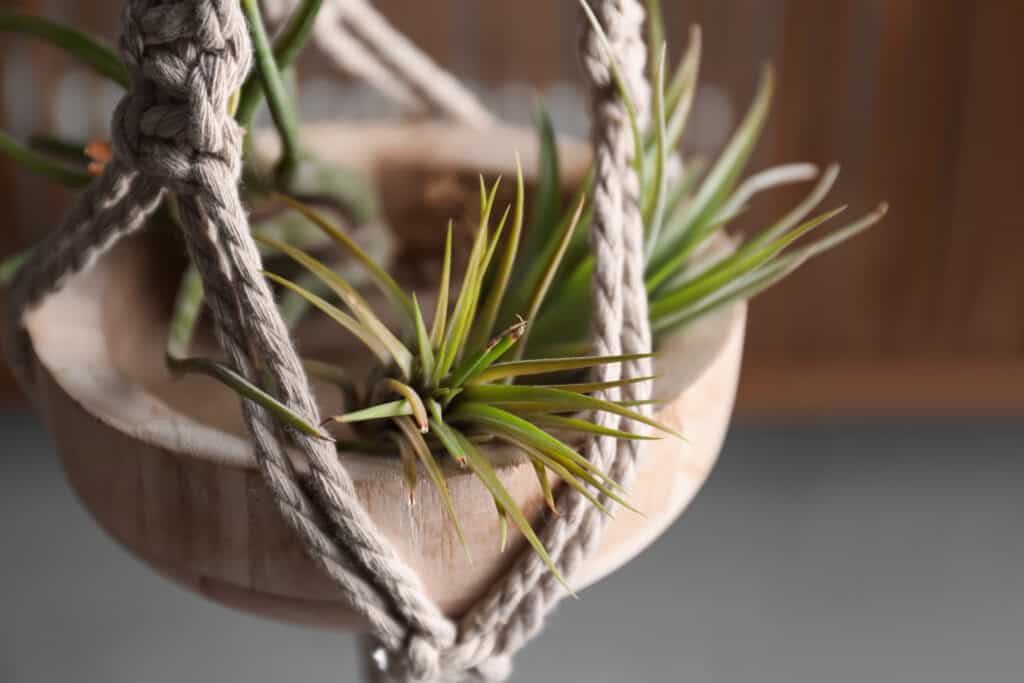
Tillandsia plants absorb nutrients and moisture from the air and can thrive in a variety of environments.
©iStock.com/Liudmila Chernetska
Air plants, which belong to the genus Tillandsia, are unique in that they do not require soil for growth. They absorb nutrients and moisture from the air using their leaves and can thrive in a variety of environments. These plants come in many shapes and sizes, with over 650 species available.
Succulents, on the other hand, are not confined to one family or genus. Instead, “succulent” is an adjective used to describe any plant that has thick fleshy leaves that retain water. This includes common houseplants, such as cacti, aloe vera, jade plants, and rubber trees. Succulents come from many plant families and many genera.
Air Plant vs. Succulent: Growth
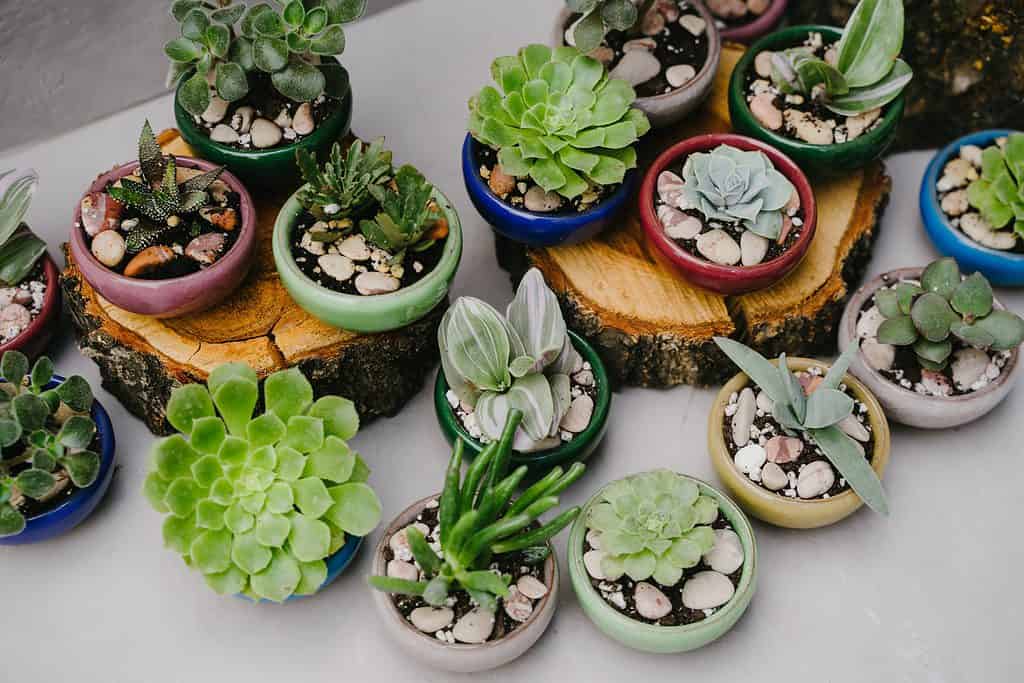
Indoor succulents are extremely rewarding, and you’ll be amazed at how quickly your little green babies grow into full-size plants.
©Alice Rodnova/Shutterstock.com
Air plants are an amazing group of epiphytes. This means that they can gain moisture and nutrients from multiple sources in the environment. They don’t need to be planted in soil, as they take their nutrients from rain, debris in the area, and even particles floating in the air!
Succulents, on the other hand, must be grown on or near land. They are terrestrial plants that rely solely upon the soil for water and nutrient absorption.
Air Plant vs. Succulent: Roots

Crassula multicava is a species of succulent that spreads along the ground to form a dense mat of ground cover and produces star-shaped white flowers.
©Sergodef/Shutterstock.com
Air plants are a special type of plant known as an epiphyte, meaning that their roots remain exposed, and they use them to cling to other plants or trees. They can often be seen growing on tree trunks and branches, using their roots in order to draw nutrients from the air around them.
On the other hand, succulents have roots that grow downward into the soil in order to get the water and nutrients they need for survival. These underground roots also act as anchors for these types of plants, allowing them to stay firmly rooted even in dry or rocky environments.
Air Plant vs. Succulent: Water
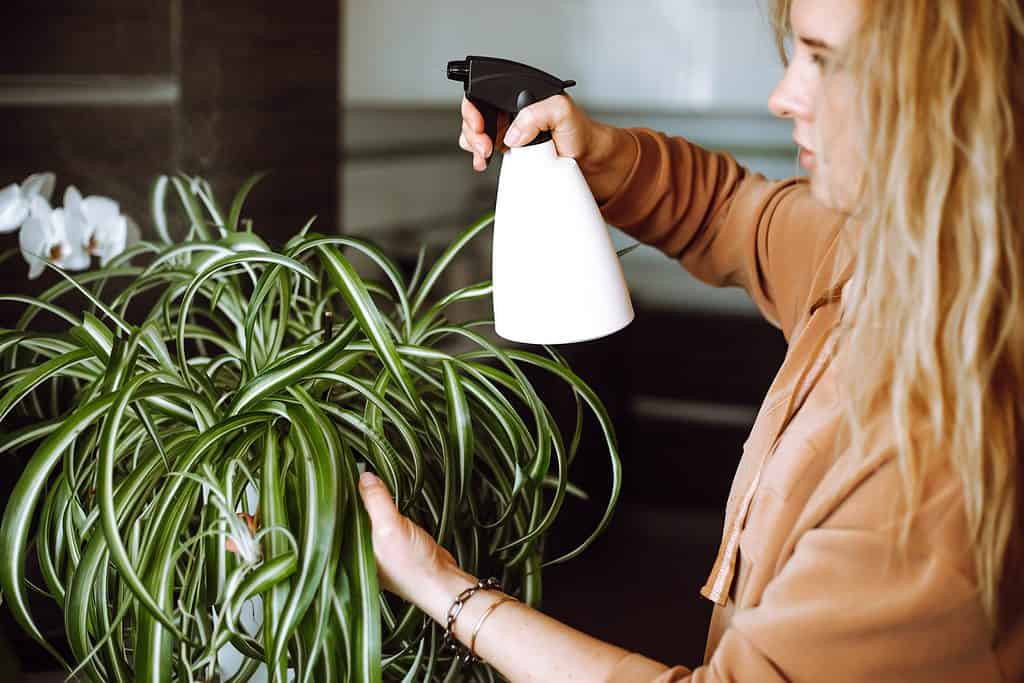
An air plant, such as the spider plant shown here, should be misted with a bottle of water.
©tativophotos/Shutterstock.com
When it comes to watering, both air plants and succulents require infrequent but thorough hydration. Water air plants by misting them or submerging the plant underwater for 20-30 minutes.
On the other hand, allow succulents to dry out completely, and then water them in a traditional manner. This involves pouring water on the soil of your succulent so that its roots have enough time to absorb all of the moisture. It is important not to overwater either type of plant as this could damage their roots and cause rot.
Air Plant vs. Succulent: Colors

Succulents come in a variety of shapes and colors
©skywing/Shutterstock.com
When it comes to colors, air plants come in a few basic shades, with green being the most common. Red, violet, and burgundy are also popular options.
Succulents have a far more expansive color selection, including all of the colors listed above for air plants, as well as blue-green, yellow, purple, and variegated varieties. Variegated succulents offer an especially unique look due to their attractive combination of two or more distinct colors in one plant.
Air Plant vs. Succulent: Display

Air plants and some succulents, like Donkey Tail shown here, display well in hanging baskets.
©Pravruti/Shutterstock.com
Air plants can be displayed in an array of creative ways. Gardeners often hang them on walls, attach them to driftwood, or let them grow on larger houseplants. With their clinging roots, air plants are more versatile and allow for a variety of display options that aren’t possible with succulents.
Succulent displays tend to be more traditional, usually in a planting pot, hanging basket, or planted directly into the earth outside.
Examples of Air Plants

Tillandsia usneoides (Spanish Moss) is a type of air plant.
©iStock.com/Penny Britt
Some popular varieties of air plants include Tillandsia cyanea (Pink Quill), Tillandsia xerographica (King’s Tears), and Tillandsia usneoides (Spanish Moss). All these beautiful examples are sold in most garden centers or online. Additionally, many species of Bromeliads, such as Aechmea fasciata, Neoregelia carolinae, and Vriesea splendens, also make great air plant choices. With proper care and maintenance, each one will provide you with years of enjoyment!
Examples of Succulents

Like other indoor succulents, jade plants (pictured) will thrive with 4-6 hours of sunlight each day.
©Olga Miltsova/Shutterstock.com
Examples of succulents include aloe vera, jade plants, crassula ovata or jade tree, kalanchoe, echeveria species, and sedum. Popular varieties vary in size and shape from the small but mighty haworthias to the towering majesty of ayuersia agavoides. All types offer unique colors and textures that make them attractive additions to any home or garden.
Where you can buy succulents depends on your area. Home improvement stores like Lowes or Home Depot often carry succulent displays during the gardening season, while local nurseries may have more variety year-round. Online sellers also provide an excellent selection, including rare varieties that can be shipped directly to your door!
Up Next
- Types Of Hen and Chicks Succulents
- 10 Hanging Plants To Consider In Your Home
- Types Of Flowering Succulents
The photo featured at the top of this post is © Followtheflow/Shutterstock.com
Thank you for reading! Have some feedback for us? Contact the AZ Animals editorial team.






